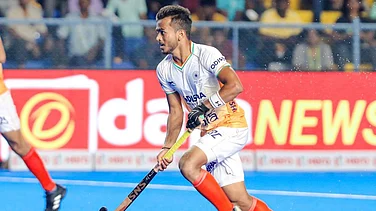Spin bowling is a subtle art; it is not always about spinning the cricket ball. It is about cunningness, disguise, deception, about raising hope and dashing it. The straight ball can be more dangerous than the one spinning on a track that provides extravagant spin. “If the battter thinks it is spinning, then it is spinning,” as the great English left arm spinner Wilfred Rhodes said.? (More Cricket News)
Why It Is Inevitable For India To Present Wickets That Aid Spin
Spin is an Indian strength and we should own it, as long as wickets don't excessively favour one side.

Fast bowling threatens a batter’s body, spin messes up his mind. It is a non-violent form of attack.?
Ravichandran Ashwin and Ravindra Jadeja are inheritors of a great tradition in Indian cricket – each of them has stamped that inheritance with his own style and personality. Ashwin belongs to a line going back to Ghulam Ahmed and including the likes of Erapalli Prasanna, S Venkatraghavan, Harbhajan Singh. Jadeja’s forebears were Vinoo Mankad, Salim Durrani, Bishan Bedi, Dilip Doshi, Ravi Shastri, Maninder Singh. ?
Ashwin’s variety and Jadeja’s control have meant that India haven’t lost a home series in a decade, during which Ashwin claimed 269 wickets in 44 Tests and Jadeja 179 in 37. In this period, India also discovered a world class fast bowling combination spearheaded by Jasprit Bumrah with Mohammed Shami and the older Ishant Sharma ensuring that India’s attack was not uni-dimensional, and may on occasion have been the best in the world. ?
Such a fine balance meant that India won successive series in Australia and were 2-1 ahead in England before the pandemic cut short the last series, and England drew the series when it was resumed.?
In the last series that India lost at home, to England, the spinners Graeme Swann and Monty Panesar did the damage. Earlier too, visiting spinners like Australia’s Ashley Mallett, Lance Gibbs of the West Indies, and England’s Derek Underwood had troubled Indian batsmen who had the reputation of being the best players of spin in the world. Bishan Bedi often complained that the batsmen didn’t give the spinners enough runs to bowl at. ?
Despite the proliferation of fast bowlers in India’s early Test match days in the 1930s and even today, India’s reputation as a country of spin has endured. Anil Kumble’s 619 wickets and Bhagwat Chandrasekhar’s dramatic spells which led to India’s maiden victories in England and Australia in the 1970s were seen as very “Indian”.?
With that history and that talent, for India to present wickets that aid spin is inevitable. Every home team in every sport plays to its strengths. In the days when the West Indies had the best fast bowlers, they didn’t have spinning tracks. In England, where the ball seams, there are more seamers than spinners lying in wait for visitors. It would be foolish if the tracks didn’t help – when Jim Laker was their leading spinner, Old Trafford, Manchester was helpful enough for him to take 19 wickets in the Test.?
India need not feel embarrassed or apologetic if their wickets tend to help their bowlers. What they need to guard against is overdoing it, as has happened when wickets have been left underprepared or excessively spin-favouring. Nagpur, in the first Test against Australia, was a slow track rather than a viciously spinning one. Australia, amazingly for the No. 1 team in the world, had psyched themselves about the wicket and the spinners, looking for the devil everywhere except within themselves.?
In that series England won in 2012-13, Indian skipper M S Dhoni told the groundsman at Eden Gardens to prepare a “turner”. The latter, however, thought this “immoral”. No one tells the groundsman what to do. But every groundsman knows which side his bread is buttered on.
- Previous Story
 'I Can Never Give Up': Vivek Sagar Prasad On A Mission To Take Indian Hockey Places
'I Can Never Give Up': Vivek Sagar Prasad On A Mission To Take Indian Hockey Places - Next Story
























